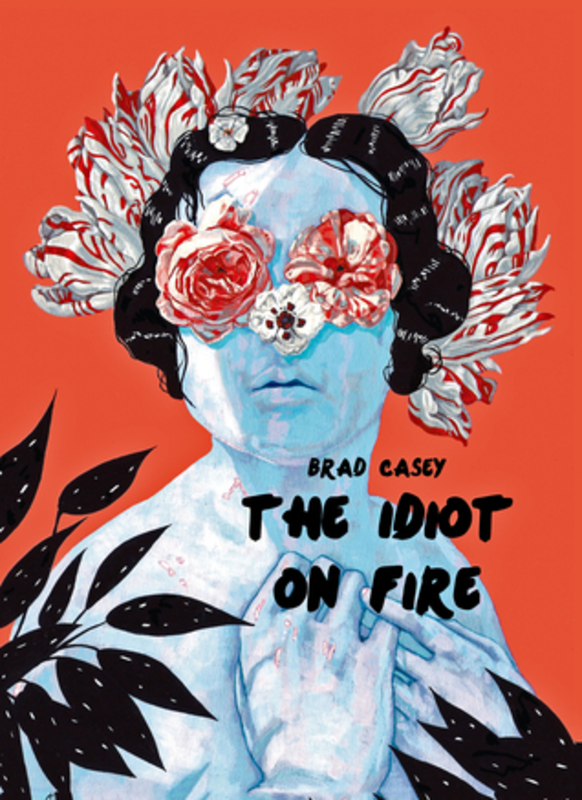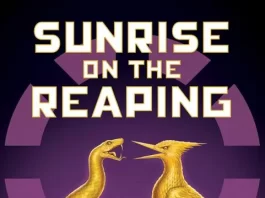I’m at a book launch, and I’m standing in front of this table. There are many tiny, colourful books on the table. I’ve already picked up two of them (Cason Sharpe’s Our Lady of Perpetual Realness & Other Stories, and Liz Bowen’s Sugarblood) when I spot Brad Casey’s The Idiot On Fire. On the back cover, bill bissett (contextualized simply as: “legendary poet”) describes Casey’s collection as “a brillyant n up lifting xperiens.”
A casual scan of the chapbook yields a series of two line stanzas which, by themselves, are so casual they border on antagonistic. However, Casey strings these sighs-as-statement stanzas together with metaphors that light up with the brightness of those magnesium powder flash lamps photographers used before the advent of light bulbs. If his sincerity is striking, the humour with which he reaches sincerity is astonishing.
It’s this way that Casey can begin a section (in this case, the second section of a poem titled or dedicated “For Mouna in New Mexico”) with a series of seemingly innocuous thought-statements like “this year there was a blood moon supermoon eclipse / i saw it on your instagram / all instagram’d up” and follow up with thoughts that casually (but consistently) amble their way up to staggering crescendos: “we need joanna newsom to drop a new album like rn” he writes. “/ i read that we’re living in a post-shrek-the-musical age / drunk and alive like jellyfish.”
When we get down to it, what is poetry supposed to do?
Yes, it’s supposed to be a tool for self-expression, but above all, I think what we ask of poetry (or at least of good poetry) is that it give us a lens with which to re-experience the world. We use metaphors to relate to ephemeral concepts like “love” because we can’t really use concrete language to characterize what are largely individualized experiences grouped together underneath the same umbrella. Casey seems to be innately aware of this. In the sense, at least, that he builds upon individual concrete images to explore the shimmering, not-quite-there terrain of individual (yet shared) experiences.
Casey manages to connect to readers by roping together the mundanity of everyday life with images that function as surrealism, throwing two starkly unrelated entities next to each other (or inside each other) in an effort to highlight both the specific qualities of both image aspects, and create in our minds a new connection: the result of both entities impossibly juxtaposed. By anchoring these instances of surrealism within narratives that are overwhelmingly comfortable (in the sense that they place readers within recognizable environments) Casey indulges in exploring what he calls “the sads” (a state of constant melancholy introspection).
Always displaying the curiosity and humour of someone who, despite obvious experience, has remained open and unjaded, Casey fills The Idiot on Fire with some of the most fervent and convincing contemporary love poems.
It’s almost equally as impressive that Casey’s collection is explicitly accessible by everyone. You don’t need to be “into poetry” to fall face-first into Casey’s verse, you don’t even need to have previously been in love.
Look my dudes, Brad Casey has invited you to a party. There will be laughing and drinking and crying. There will be real, serious, passionate love, and even more passionate, serious heartbreak. You’ll be treated to the most sensuous, honest, platonic embrace of the past couple of years.
All you gotta do is show up.




